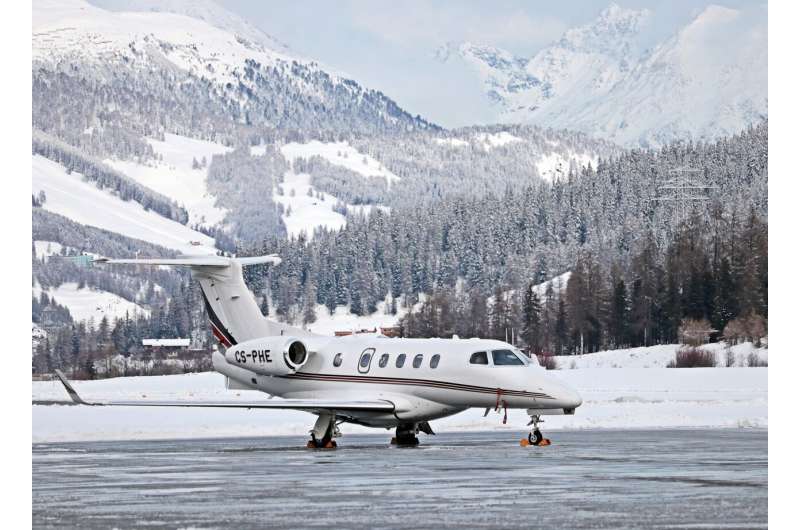Smooth hydrophobic coatings may be more effective for aircraft de-icing

Icing poses a hazard to aircraft and is usually prevented by anti-icing fluid treatment before takeoff, which tends to wear off quickly. Permanent hydrophobic coatings that reduce wettability and do not allow water to freeze on the aluminum body are a promising complementary measure for counteracting aircraft icing. Reservations have been voiced, though, as to whether hydrophobic coatings render anti-icing fluids less effective. An experiment by Russian researchers found the protective properties of anti-icing fluids to be independent of aluminum surface wettability as such. However, the accumulation of these fluids in the surface topography impairs the anti-icing properties of hydrophobic coatings, suggesting that smooth ones are preferable when the two measures are combined. This research, supported by the Russian Science Foundation (RSF) Presidential Program grant, was published in International Communications in Heat and Mass Transfer.
Ice not only affects an aircraft's aerodynamic performance but can also disrupt the operation of its engines and control devices, so particular attention should be given to de-icing. While on the ground, the aircraft is sprayed with anti-icing fluids that form a protective film on the surface so that atmospheric moisture does not freeze on the fuselage. However, this provides short-term protection only, because the fluid quickly flows off during takeoff and acceleration.
The anti-icing systems used in flight include heaters and inflatable protectors. Aircraft manufacturers and scientists work together on enhancing their efficiency by using water-repellent hydrophobic coatings that reduce surface wettability and ice adhesion. However, recent research by Canadian scientists has shown that this approach might prevent the anti-icing fluid from forming a protective film.
Researchers at Skoltech decided to check whether the surface wettability of aluminum used in the aircraft skin actually affects the performance of anti-icing fluids. In its experiment, the team created a freezing rain environment and saw ice form on superhydrophilic plates where fluids flow easily and hydrophobic aluminum plates treated with anti-icing fluids.
In contrast to the findings of the Canadian researchers, the Skoltech team discovered that plate wettability had no impact whatsoever on the performance of anti-icing fluids. The Russian scientists assume that their unexpected findings may have to do with the surface tension and viscosity of anti-icing fluids. A further factor to be taken into account by future research is surface roughness: Rough surfaces take longer to accumulate ice. In addition, the Skoltech study showed that the accumulation of liquid in the surface texture reduces the water-repellent properties of hydrophobic coatings.
"We think smooth hydrophobic coatings are better than rough superhydrophobic coatings when it comes to treatment with anti-icing fluids," Viktor Grishaev, Ph.D., a senior research scientist at Skoltech and RSF grant project manager, commented.
More information: Viktor G. Grishaev et al, Anti-icing fluids interaction with surfaces: Ice protection and wettability change, International Communications in Heat and Mass Transfer (2021). DOI: 10.1016/j.icheatmasstransfer.2021.105698
Provided by Skolkovo Institute of Science and Technology




















